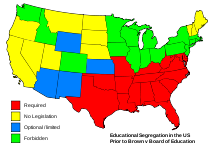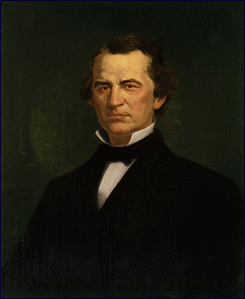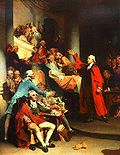We learn in this week segment of Up‘s “What We Know Now” with host Steve Kornacki that Minnesota Gov. Mark Dayton signed marriage equality passed by the Demcratic held state legislature. Also, Jason Richwine resigned from the Heritage Foundation after revelations about his doctoral dissertation. In the aftermath, Pablo Pantoja, the director of the RNC Florida Hispanic Outreach, resigned and became a Democrat.
Democratic nominee for the vacant Senate seat in Massachusetts, Ed Markey dis-invited former Georgia Democratic congressman Ben Jones from a fundraising event over Jones’ support of the displaying the Confederate flag public events.
According to Public Policy Polling, hipsters are no longer “in.”
Telling us what they have learned this week are Steve’s guests: Patricia Ireland, former President of the National Organization for Women; Anu Bhagwati, executive director and co-founder, Service Women’s Action Network; Goldie Taylor, MSNBC contributor, managing editor, The Goldie Taylor Project; and Jessica Hinves, former U.S. Air Force member, board member of Protect Our Defenders (a group that works to being attention to military sexual assault).
Minnesota Legalizes Gay Marriage: Gov. Mark Dayton Signs Bill Into Law
from Huffington Post
Minnesota officially became the 12th U.S. state to approve same-sex marriage May 14 when Gov. Mark Dayton appeared before a jubilant crowd to sign a marriage equality bill into law. [..]
Dayton’s signature came just a day after the state Senate approved it with a 37-30 vote, the Associated Press reported.
“Life, liberty and the pursuit of happiness should certainly include the right to marry the person you love,” he noted.
Echoing those sentiments was State Rep. Karen Clark and Sen. Scott Dibble, who are both openly gay.
Jason Richwine Resigns From Heritage Foundation After Dissertation Controversy
by Luke Johnson, Huffington Post
Jason Richwine, the co-author of a Heritage Foundation report on immigration who came under fire this week for arguing in his Harvard dissertation that Hispanic immigrants to the U.S. have substantially lower IQs than whites, resigned Friday. [..]
The report put the cost of immigration reform at a whopping $6.3 trillion. Though Heritage’s 2007 report was one of the reasons an earlier immigration bill failed, the 2013 report was widely mocked, even by Republicans the foundation hoped would support it.
Harvard accepted Richwine’s 2009 dissertation for a doctorate in public policy. In it, he spoke of the “growing Hispanic underclass.”[
Pablo Pantoja Turns Democrat: RNC Florida Hispanic Director Cites GOP ‘Intolerance’ In Making Party Switch
by Chris Gentilviso, Huffington Post
Less than two months after the Republican National Committee announced a multi-million dollar campaign to improve minority outreach, one of its state Hispanic directors is leaving the Republican Party altogether.
In a letter released by The Florida Nation on Monday, RNC State Director Of Florida Outreach Pablo Pantoja announced that he is changing his political affiliation to the Democratic Party.
“It doesn’t take much to see the culture of intolerance surrounding the Republican Party today,” he wrote. “I have wondered before about the seemingly harsh undertones about immigrants and others. Look no further; a well-known organization recently confirms the intolerance of that which seems different or strange to them.”
Ed Markey Disinvites Ben Jones From Campaign Appearance Over Confederate Flag Beliefs
by Pam Lavender, Huffington Post
Rep. Ed Markey (D-Mass.) disinvited former Georgia Democratic congressman Ben Jones from a fundraising event after learning of Jones’ support for the Confederate flag. [..]
Jones defended the Confederate flag as a symbol of Southern culture in 2012 when NASCAR canceled plans to have professional golfer Bubba Watson drive the General Lee — the car from “The Dukes of Hazzard” which features a Confederate flag on its roof — at Phoenix International Raceway. Jones called the cancellation of the event “an extraordinary insult to rural Southerners.”
Hipsters trail in the polls but survey’s worth called into question
by Adam Gabbatt, The Guardian
Public Policy Polling claimed 42% of Americans viewed hipsters unfavourably but methodology and purpose of poll questioned
A US polling company claimed on Monday that a shocking 42% of Americans have an unfavourable opinion about hipsters – in a telephone poll conducted among people who only have landlines.
Public Policy Polling was widely mocked for its survey, both for the frivolity of the poll, and for using a methodology that seemed guaranteed to produce the result that emerged.







 On this day in 1937,
On this day in 1937,